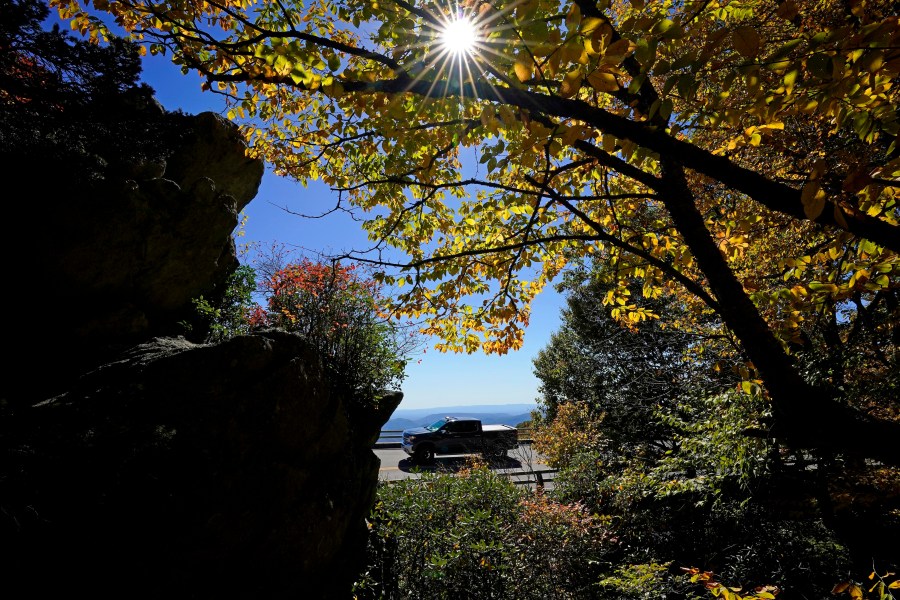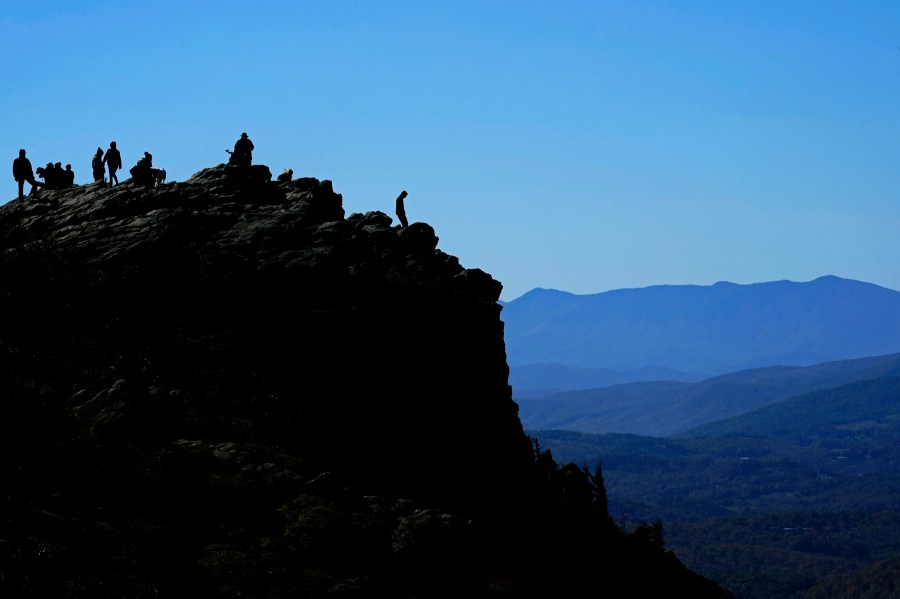The most visited national park of 2021 isn’t exactly a park

People take in the view of the Blue Ridge Mountains from atop Grandfather Mountain near Linville, N.C., Monday, Oct. 18, 2021, as autumn arrives in the highlands. (AP Photo/Gerry Broome)
(NEXSTAR) – You’ve heard of Yellowstone, Zion, Great Smoky Mountains, and Grand Canyon, but what if we told you none of these were the most visited of the National Park System in 2021? Would you believe that the most visited national park isn’t really a park?
The National Park System, NPS, recently released visitation numbers for 2021. While 44 of its 423 parks set visitation records last year, numbers throughout the entire system remain below pre-pandemic totals. Visits are, however, up by 60 million over 2020 when the COVID-19 pandemic restricted access to most parks.
Despite the records set by many parks – including six that broke records set in 2020 – one remained in the top spot: Blue Ridge Parkway with 15.9 million visits.
Technically speaking, Blue Ridge Parkway isn’t exactly the park you envision when you think of Yosemite or Grand Teton. It’s actually a series of parks with one key feature: a 469-mile stretch of roadway that traipses through the Appalachian Highlands of Virginia into the western tip of North Carolina.
Slideshow: Blue Ridge Parkway
If you take the Blue Ridge Parkway to its southernmost end, you’ll be able to drive right into Great Smoky Mountains National Park, which was the second-most visited in the NPS last year.
Blue Ridge Parkway does offer more than just paved roadway and stunning views of the Appalachians, some of the oldest mountains in the world. You’ll also find:
- Mount Mitchell, the highest mountain peak in the eastern U.S.
- New River, which is actually the oldest river in North America.
- Linville Gorge, the deepest gorge east of a deeper gorge, the Grand Canyon.
- Whitewater Falls, the highest waterfall east of the Rockies.
It’s also the longest road planned as a single unit in the U.S., according to NPS. The Blue Ridge Parkway was built in a series of major public works projects to help boost the travel and tourism industry, giving the Appalachian region a leg up to climb out of the Great Depression nearly 100 years ago.
Construction began on the Blue Ridge Parkway in 1935. By the time World War II began roughly four years later, about 170 miles were open to travel and another 160 were under construction. By the early 1950s, only half of the parkway was complete. In 1966, all but 7.7 miles had been constructed. After negotiating for years, the Blue Ridge Parkway’s 469-mile route was completed in 1987.
In addition to protecting the mountain landscapes along it, the parkway preserves the “log cabin of the mountain pioneer, the summer home of a textile magnate, and traces of early industries such as logging, railways, and an old canal.” According to NPS, Blue Ridge Parkway has eight campgrounds, 300 miles of trails to hike, 13 picnic areas, and concerts with traditional music from the Southern Appalachians.
Blue Ridge Parkway saw its most visits in 2002 with more than 21 million guests. Since then, 2014 is the only year visitation has dipped below 14 million for the parkway. Between 2011 and 2021, Blue Ridge Parkway was the most visited six times – the Golden Gate National Recreation Area topped the list during the five other years.



















